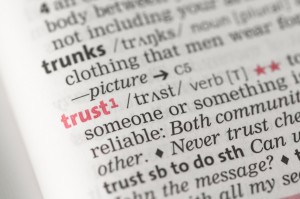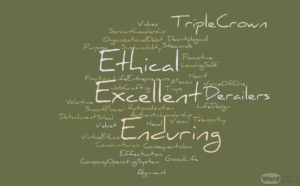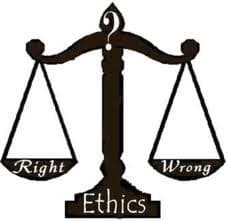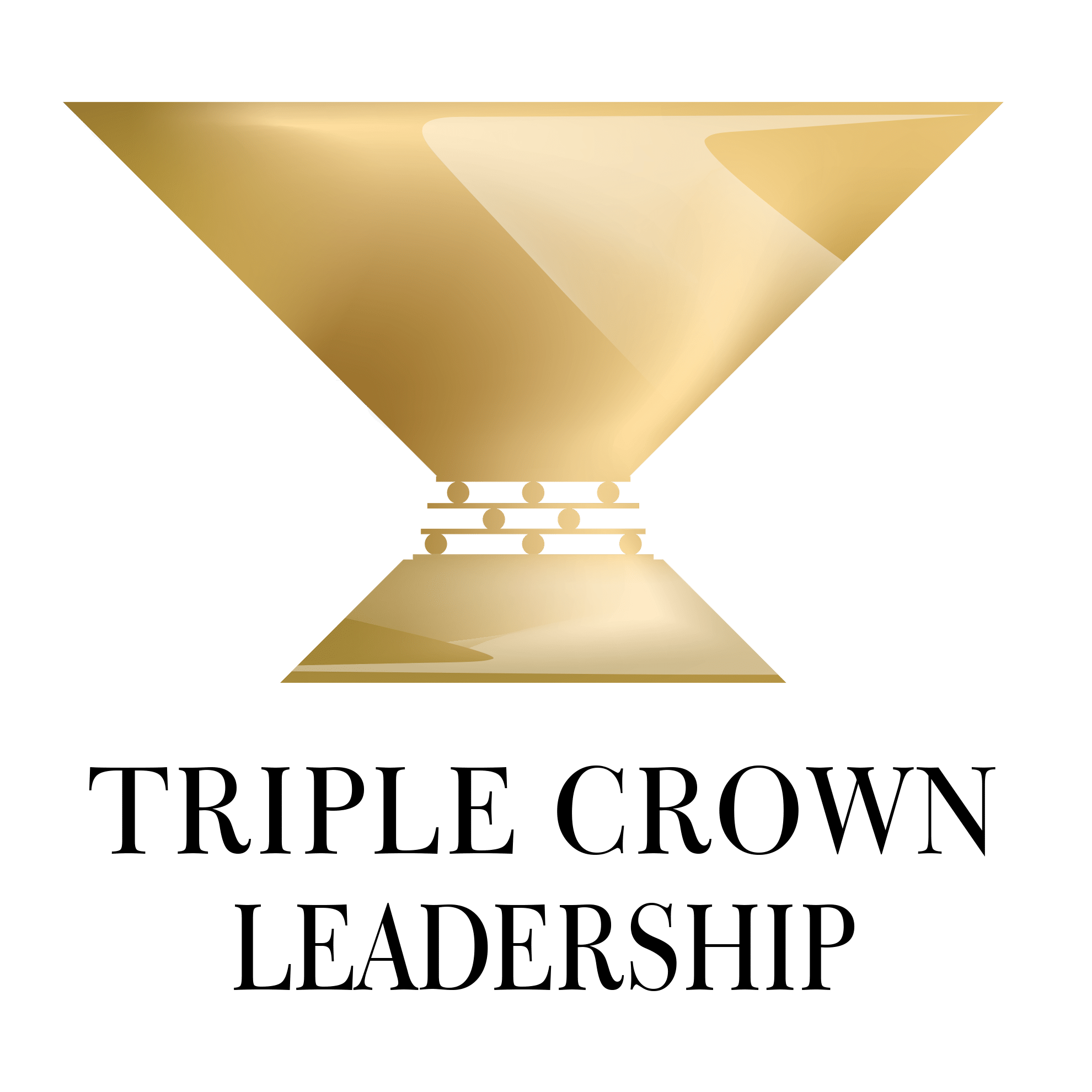
Paradoxes of Leadership
Paradox: A seemingly contradictory statement that may nonetheless be true. Leadership is rife with paradoxes, competing claims, countervailing pressures, and conflicts. There is frequently a “thesis” and an “antithesis” in leadership dilemmas, often requiring a “synthesis.” Here are some leadership paradoxes and other interesting dualities we have learned: Serving followers and being served by followers Flexing between the hard (steel) and soft (velvet) edges of leadership Being optimistic while staying grounded in reality Having confidence and humility Being decisive and collaborative Protecting people and taking necessary “casualties” Being in charge and unleashing other leaders Getting results (ends) with integrity (means)

Leadership Lessons from The Lord of the Rings
Leaders Venture into the Unknown “It’s a dangerous business, Frodo, going out your door. You step onto the road, and if you don’t keep your feet, there’s no knowing where you might be swept off to.” Bilbo Baggins Leaders Step Up “I will take the Ring,” Frodo said, “though I do not know the way.” The Burdens of Leadership Frodo: “I wish the Ring had never come to me. I wish none of this had happened.” Gandalf: “So do all who live to see such times, but that is not for them to decide. All we have to decide

Put Trust on Your Daily Docket
Let’s assume that as a CEO or board leader you want your firm to be viewed as trustworthy by its stakeholders. You realize a more trusting set of relationships between people will be useful, perhaps even a breakthrough to improved performance. Great. But this is a field where you don’t have expertise. You have been bred in the battles of line and staff assignments where results had to be achieved, new ideas implemented, and problems resolved fast. Building organizational trust is a strange, new endeavor. What can you do? Give them some books to read? Hire a consultant to conduct

Everyone Leads at Times
“Leadership is your choice, not your title.” –Stephen R. Covey Have you ever heard someone say, “I’m just not a leader”? “Fair enough,” you might think. Some people are just not into that leadership thing. Perhaps they have other talents or interests. Or they are reluctant to take responsibility, or afraid of not leading well. Not so fast. Everyone leads something at some time (whether poorly or well). They may lead at home, or with friends, at school, on a project, or at work. And our world desperately needs better leadership—in companies, communities, families, governments, nonprofits, education institutions, and more.

Leaders Must Be Present with People
People won’t follow your leadership if you’re not fully present with them. If you are not present with people, you are not connecting with them. Without connections, the leader/follower relationship breaks down and trust is undermined. People feel devalued. You’re sending a signal that they’re not important. As a result, they won’t commit to follow you from their hearts because you weren’t engaged with them. But wait, you say, “In this age of high-tech and hyper-speed, I’ve got to multi-task. You don’t understand what I have to juggle: downsized staffs; cut budgets; doing more with less; 24/7 communications and social

The Triple Crown of Leadership
The sports world is abuzz with excitement. We may have our first Triple Crown winner since 1978, when Affirmed captured what has been called “the most elusive championship” in all of sports. California Chrome is poised to accomplish this incredible feat on June 7 if he can win at Belmont Park. This unlikely horse, bred in California for only $10,000 with a 77-year-old trainer, has won his last six races. Since 1875, only eleven thoroughbreds have won the Triple Crown, including such iconic names as War Admiral, Whirlaway, Citation, Seattle Slew, and of course, perhaps the best of them all,

Rationalizations that Derail Leadership
“The softest pillow is a clear conscience.” –Narayana Murthy, Co-founder and former CEO, Infosys Our ability to rationalize our behavior is astonishing. And dangerous. Basically, we all have a good sense of what’s right or wrong, but we have an inherent ability to talk ourselves into believing that something that’s wrong is really okay. We’re all good at this self-deception, especially when under pressure. Leadership is a moral activity. When done well, it raises people up and brings out their best. Successful ends do not justify unethical means. The journey and the destination must both be based on moral principles

Cross-Sector Leaders Need to Be Triple Crown Leaders
This guest blog is written by Paul Thallner, an independent leadership and organizational development consultant. Imagine that you are an incredible and gifted athlete, and you become a fantastic baseball player. Then, because you like a challenge, you decide—after a decade of high performance in baseball—to switch to cycling. Think about it: what would you need in order to be effective as a cyclist when you’ve spent all your time playing baseball? Engaging and Collaborating across Sectors In the world of work, transitions like that are happening all the time, and are becoming more common. A September 2013 Harvard

Three Responsibilities of Great Leadership
Great leadership has many responsibilities: Safeguarding your colleagues Serving your stakeholders Making tough decisions Planning for succession And much more However, certain responsibilities are critically important and do not get the time and attention they deserve. Here are three. 1) Commit to the triple crown quest of building an excellent, ethical, and enduring organization. The primary message of Triple Crown Leadership is this: make building an excellent, ethical, and enduring organization the overarching priority of your organization. Excellent means achieving exceptional results that have significant, positive impacts on stakeholders: customers, employees, shareholders, suppliers, and communities. Ethical means acting with integrity,

Six Tips on Giving Effective Feedback
Here are some edited excerpts from a great post by our leadership colleague, Chuck Wachendorfer, on giving feedback effectively. Giving feedback effectively includes following these rules: 1. Focus on the behavior, not the intention. Never question someone’s intent. Assume they wanted to do the job well. It’s the behavior that may have fallen short. Usually, people can deal with changing their behavior more objectively. Attacking someone’s intent tends to be more personal and difficult to accept. 2. Give feedback frequently. If you want to help someone change their behavior, giving them feedback consistently and often will help them change

10 Reasons Why Great Leadership is a Group Performance
“We have a wrong-headed notion of what constitutes a leader, driven by an obsession with leaders at the top.” –Bill George, Harvard professor, former CEO, Medtronic We have a crisis in leadership today with seemingly continuous scandals rocking business, government, religious organizations, nonprofits, sports, and more. The latest results from the much respected Edelman Trust Barometer show only 18% of the knowledgeable people surveyed believe business leaders, and only 13% of government leaders, will tell you the truth. Shocking. We can blame the crisis on human nature, greed, the lust for power, ego, or the phases of the moon. All have

Leader, Manager, Follower: Not as Simple as You Think
“Life’s a dance, you learn as you go. Sometimes you lead, sometimes you follow.” -song lyric by John Michael Montgomery Which are you: a leader, manager, or follower? More importantly, which should you be? Can you be them all? Should you? It’s an important choice. Too often, leadership is lionized while management and followership are disparaged. Big mistake. We submit that great leadership is a situational blend of leading, managing, and following. Manager Traditional notions of management involve: Planning, budgeting, administering, staffing, organizing, directing, and controlling boundaries Being task- and object-oriented Using “head” skills such as financial or operational

Learn How to Trust Your Judgment
Leadership requires judgment. A leader judges what’s right or wrong, what’s ethical or not. She judges when to flex between the hard edge of leadership (steel) and the soft edge (velvet). A leader judges how a subordinate is performing, whether to give someone a second chance, whether a candidate has character and will fit with the organization’s culture. And a leader judges how high to set goals. “…with good judgment, little else matters; without good judgment, nothing else matters.” –Noel Tichy and Warren Bennis, leadership authors Leaders judge. How do we know when to trust our own judgment? Some might

The Scourge of Short-Termism
“The future whispers while the present shouts.” –Al Gore, former U.S. Vice President One of the great scourges of our age is “short-termism.” A staggering 78 percent of the managers surveyed in a large-scale study of CFOs and CEOs admit to sacrificing long-term value to achieve smoother earnings. In July 2011, former Federal Deposit Insurance Corporation (FDIC) chair Sheila Bair wrote: “The common thread running through all the causes of our economic tumult is a pervasive and persistent insistence on favoring the short term over the long term, impulse over patience.” Our earlier blog, “Suicide By Quarter—Leading for the Short-Term,” indicated the

Culture as a Competitive Advantage
“Culture isn’t just one aspect of the game—it is the game.” –Lou Gerstner, former CEO of IBM How can your organization gain a sustainable competitive advantage? Technological breakthrough? Killer patents? Brilliant strategy? Protected regulatory position? We suggest another, perhaps even more powerful, way: Create a high-performance culture of character. Create a culture intent on building an excellent, ethical, and enduring organization, much like the mythical Knights of King Arthur’s Round Table enjoyed. Technologies become obsolete; patents expire; regulations will change. A High-Performance Culture of Character We think of organizational culture as “how we do things here”—how people behave. Culture

